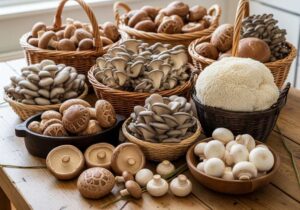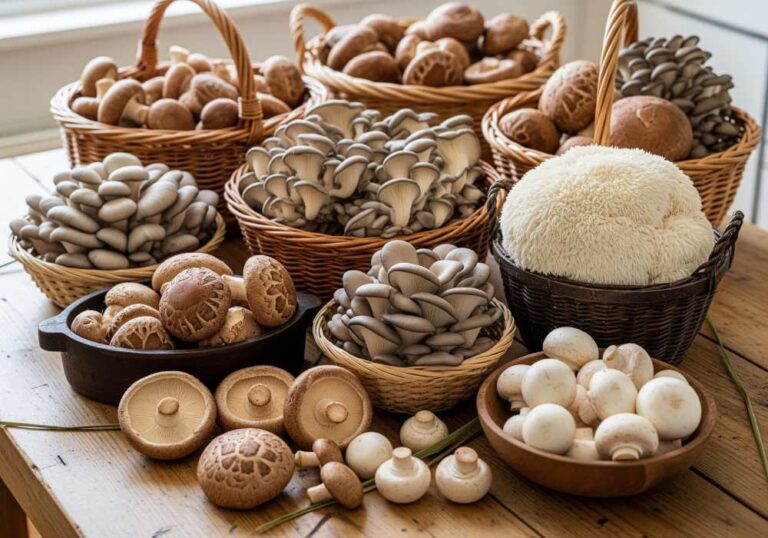When most people think of plant-based protein, they jump straight to soy, lentils, or chickpeas. But mushrooms? They’re rarely even on the radar — and that’s a mistake.
I’ve been cooking with mushrooms for over a decade, and the more I study them, the more I realize how unfairly underrated they are in high-protein plant-based eating. While they’re not protein powerhouses in the same league as beans or tofu by volume, what they offer is something more nuanced.
As plant-forward eaters increasingly seek meatless protein alternatives that are sustainable, non-processed, and gut-friendly, mushrooms provide an earthy, natural solution that blends well into meals.
Understand What is Mushroom Protein in Depth
Let’s clarify something upfront: mushrooms are fungi, not plants. But nutritionally, they sit comfortably in the plant-based space. What makes mushroom protein unique isn’t just its quantity (which varies significantly by species and preparation method) but the quality of what it delivers.
Unlike most vegetables, certain mushrooms contain a more diverse amino acid profile, including small amounts of essential amino acids that our bodies can’t synthesize on their own. For example, shiitake and oyster mushrooms contain leucine, lysine, and valine, all of which play vital roles in muscle repair, metabolism, and immune function.
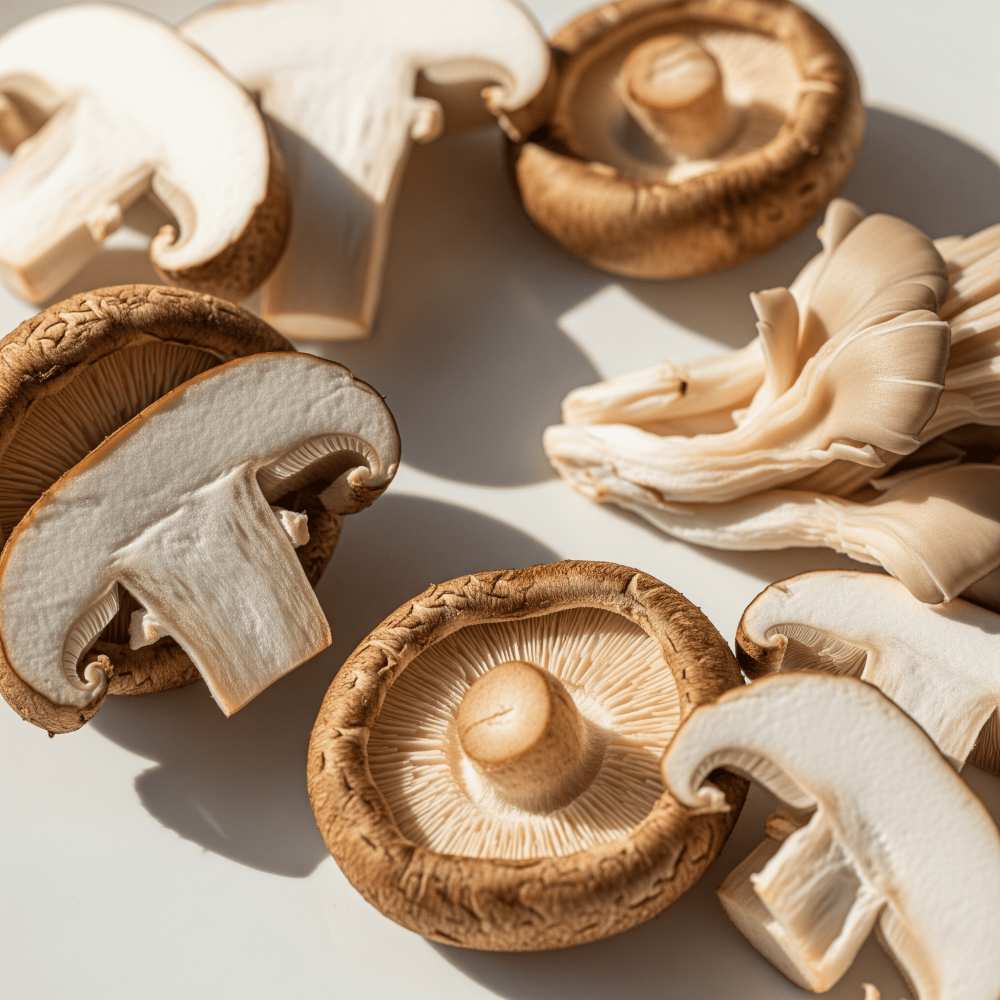
You may have heard of mycoprotein — a term often associated with commercial meat alternatives like Quorn. But mycoprotein isn’t found in whole mushrooms. It’s cultivated from a specific filamentous fungus called Fusarium venenatum.
That said, the fungal protein found in edible mushrooms shares structural similarities and, according to research from MDPI’s Applied Sciences, offers digestibility rates on par with many legumes and grains.
Protein bioavailability — how much your body actually absorbs — matters just as much as content. Fortunately, mushroom proteins are often accompanied by enzymes and fiber (like beta-glucans) that support digestion and nutrient uptake.
Studies also show that certain mushrooms possess compounds like ergothioneine, a unique antioxidant amino acid that may reduce oxidative stress and protect cells, further boosting their status as functional foods.
So, while mushrooms won’t replace legumes as your main protein source, they serve as high-functioning secondary proteins that bring a lot more to the table than numbers on a label.
The Harsh Reality of Mushroom
You don’t have to be a nutritionist to assess whether a mushroom is a good protein source, but you do need to look beyond raw numbers. One of the biggest misconceptions I see is that people look at raw weight alone.
Here’s the reality: mushrooms are roughly 85–92% water, which drastically affects how we measure and compare their nutritional impact.
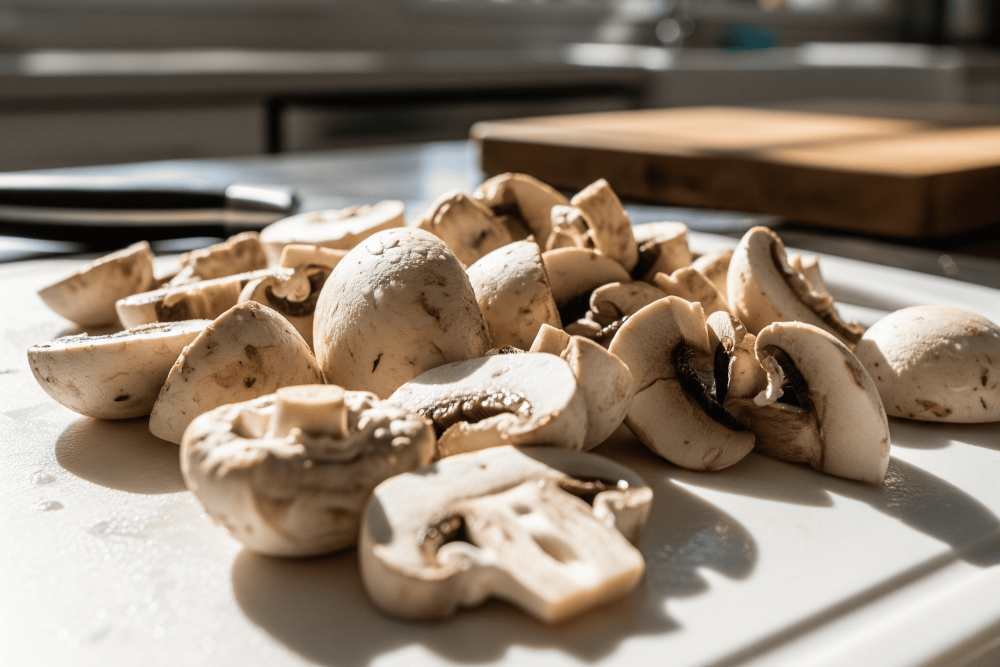
Take oyster mushrooms, for example. Raw, they contain around 3.3 grams of protein per 100 grams, which sounds modest. But after cooking — where water content reduces and nutrient density concentrates — that number becomes far more impactful per serving volume. The same holds true for shiitake, maitake, and portobello, which each bring between 2 to 3.5 grams of protein per 100g raw, and even more when cooked.
What Should Be The Ideal Evaluation Checkboxes for a Plant-Based Protein Source?
A solid plant-based protein profile needs to consider:
- Essential amino acid presence, especially lysine and methionine.
- Supporting micronutrients like B-complex vitamins (B2, B3, B5), selenium, potassium, and phosphorus, which mushrooms naturally offer in generous quantities.
- Bioactive phytochemicals like ergothioneine and phenolic compounds improve systemic resilience to inflammation and oxidative stress.
Top High-Protein Mushroom Varieties Worth Adding to Your Diet
From my experience as both a cook and a forager, here are the standout varieties that bring real protein density and culinary functionality to the table.
Oyster Mushrooms
Oyster Mushrooms are my go-to when I want both texture and nutritional payoff. They offer about 3.3g of protein per 100g raw, and their fibrous stems help mimic the bite of pulled chicken or pork when sautéed or roasted. Beyond protein, they’re rich in lovastatin precursors that support cholesterol regulation and beta-glucans for immune function.
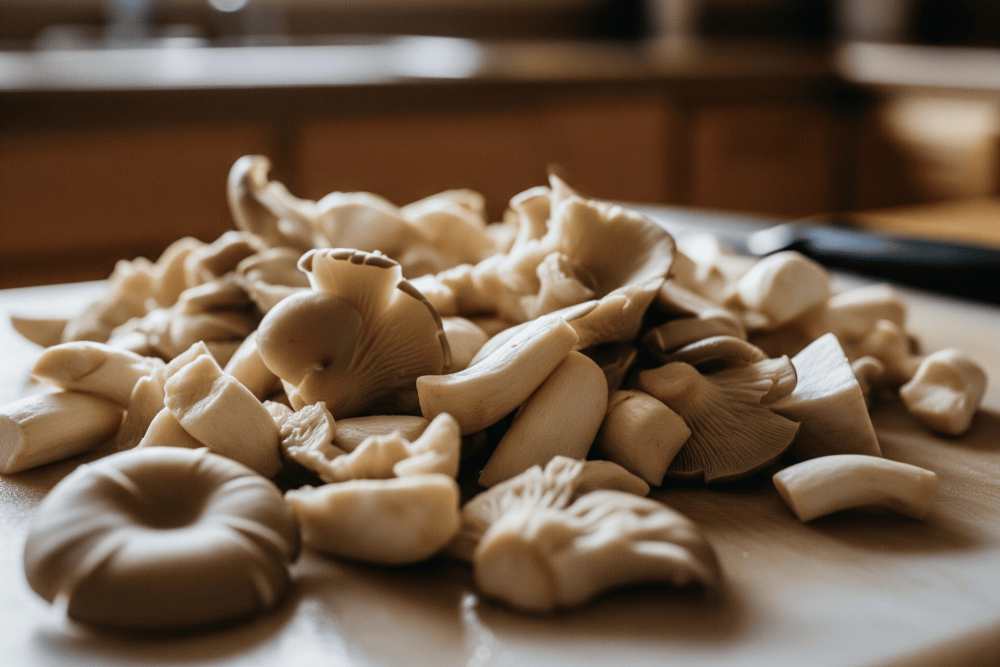
Shiitake Mushrooms
Shiitakes don’t just taste earthy and rich — they also contain all nine essential amino acids, albeit in small amounts. Their protein clocks in at about 2.2g per 100g raw, but they shine because of their unique polysaccharides (like lentinan) that enhance immune response. I often use these in stews or miso broths to deepen flavor while quietly adding protein.
Portobello Mushrooms
These giants are a favorite in vegan burgers for a good reason. At around 2.1g of protein per 100g raw, they’re not the densest in terms of numbers, but they offer a meat-like texture and impressive satiety value, which is critical for anyone reducing meat without sacrificing fullness. I recommend grilling or roasting them to concentrate their umami punch.
Maitake Mushrooms
Known as “hen of the woods,” maitake is a nutritional powerhouse. They provide a modest 1.9–2.7g of protein per 100g raw, but they’re bursting with D-fraction polysaccharides known for supporting immune health and possibly even modulating glucose levels. Their complex flavor makes them ideal in wild rice dishes or hearty soups.
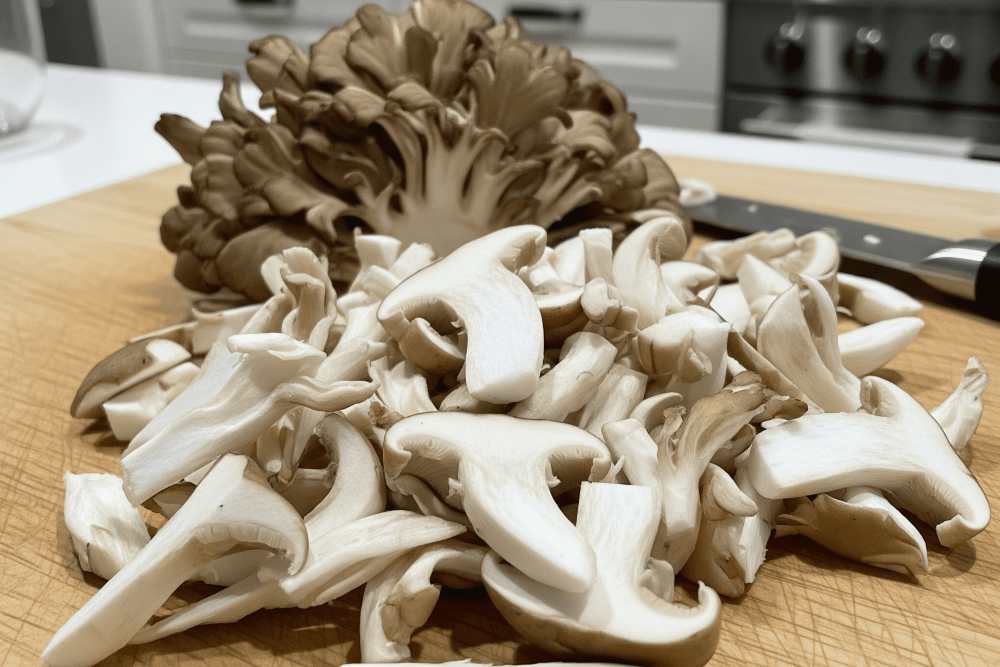
White Button Mushrooms
Often dismissed as bland or basic, white buttons are surprisingly efficient: 3.1g of protein per 100g raw, according to the data in Nutrition Journal. Their protein becomes more bioavailable when cooked, and their mild taste means they adapt to any dish without overpowering it.
Enoki Mushrooms
These slender, crunchy mushrooms pack 2.7g of protein per 100g, and they’re an excellent addition to broths, ramen, or light sautés. What’s more, enoki contains antioxidant peptides and polysaccharides that may offer protective effects at the cellular level.
While Lion’s Mane (Hericium erinaceus) is often praised more for its cognitive benefits than its protein, I personally keep it in rotation — especially when shredded and pan-seared. It adds some protein and a remarkably satisfying lobster-like texture, perfect for creative vegan recipes.
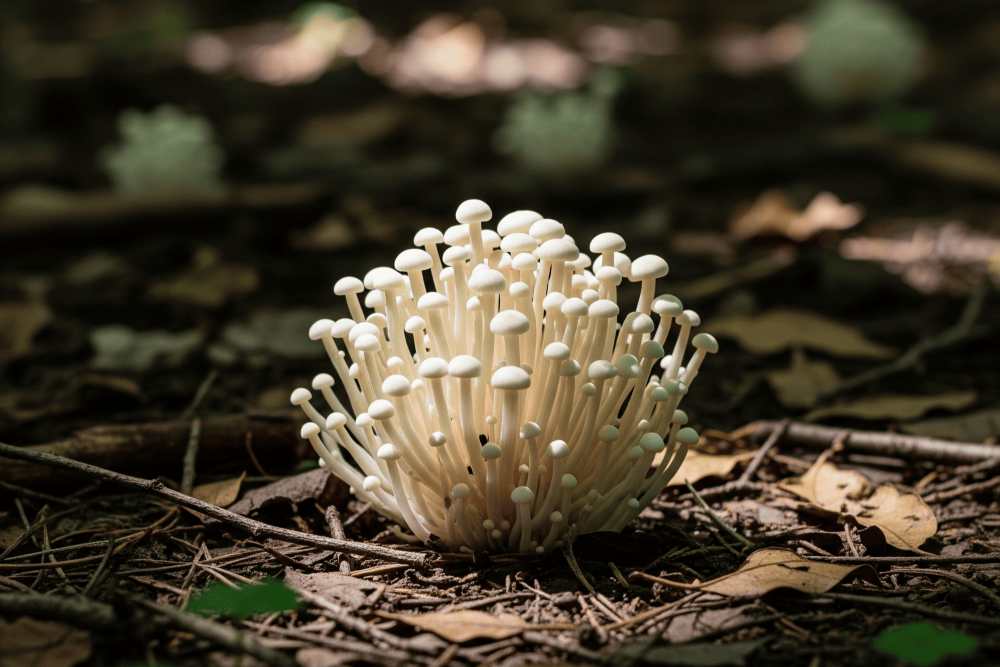
Wild vs. Cultivated: Does Growth Environment Impact Protein Quality?
I’ve picked mushrooms from the forest floor and I’ve bought them from supermarket shelves — and trust me, there’s a difference. Not just in flavor, but in nutritional integrity too.
Wild mushrooms, particularly those grown in rich, undisturbed soil, tend to have slightly higher levels of certain micronutrients and secondary metabolites, thanks to environmental stressors like wind, UV exposure, and variable moisture. These conditions encourage the production of bioactive compounds — including phenolics, ergothioneine, and terpenoids — that support human health.
According to a study published in Health and Population Nutrition (BioMed Central, 2024), wild mushrooms harvested from natural forest systems showed greater antioxidant activity and higher protein fractions compared to their commercial counterparts. That’s not a coincidence.
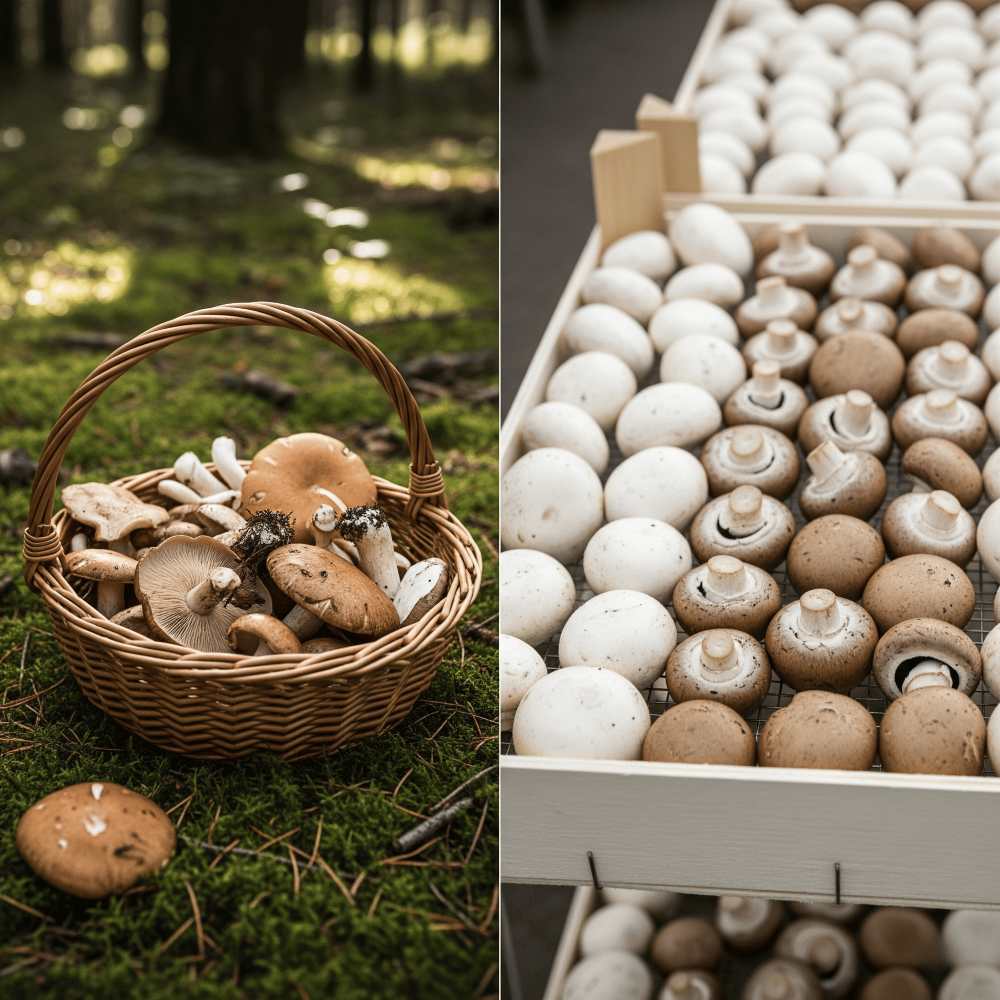
The substrate quality — what the mushrooms grow on — directly influences the nutrient makeup. Mushrooms cultivated on enriched hardwood sawdust or agricultural byproducts can be nutrient-dense too, but they rarely match the nutrient diversity of wild foraged specimens.
However, there’s a tradeoff. Wild varieties can be inconsistent in size, more expensive (if you’re not foraging yourself), and carry a higher risk of toxic look-alikes if not correctly identified. Cultivated mushrooms, on the other hand, offer predictable protein levels, better hygiene standards, and are grown under controlled, low-contamination environments.
In terms of practical protein planning, It is recommend to rely on cultivated mushrooms for daily intake, while enjoying wild mushrooms seasonally.
Cooking Methods That Preserve Protein Content
One of the biggest mistakes I see is people boiling or microwaving mushrooms until they’re soggy. That may be quick, but it’s also nutritionally wasteful. According to research published in Nutrition Journal, boiling and microwaving significantly reduce phenolic content and antioxidant activity.

Meanwhile, grilling and oven roasting retain more of the antioxidant compounds and enhance the concentration of protein per serving by reducing water weight.
From my kitchen experiments — and backed by data — here are the best methods:
- Sautéing in a bit of olive oil or avocado oil improves the bioavailability of fat-soluble compounds and creates that golden-brown, flavor-loaded crust without destroying protein.
- Roasting at moderate heat (180–200°C) for 15–20 minutes dehydrates the mushroom slightly, concentrating both flavor and protein. This is especially effective for portobello, maitake, and oyster mushrooms.
- Grilling works well for thick mushrooms like shiitake or portobello — just don’t char them to death. You want browning, not burning.
Avoid overcooking. Mushrooms cook fast — prolonged heat reduces nutrients and can toughen the protein structure, making them less digestible. Cook them until their moisture evaporates and they begin to brown, and you’ll lock in the best balance of flavor, texture, and nutrition.
If you’re using them in soups or stews, consider pan-searing first, then adding them to your broth to preserve amino acids and antioxidant capacity.
Pairing Mushrooms for Complete Protein Meals
Mushrooms aren’t complete proteins — meaning they don’t contain all nine essential amino acids in adequate amounts — but that doesn’t make them nutritionally incomplete.
According to PubMed studies on plant protein pairing, combining proteins from diverse plant sources remains one of the most effective and sustainable ways to meet daily intake goals on a vegan or vegetarian diet.
When done right, this pairing ticks the amino acid checklist and creates genuinely satiating meals that are texturally balanced and rich in micronutrients.
Here are a few combinations I lean on:
- Oyster mushrooms + lentils: This combo gives you a rich dose of lysine and leucine. These two amino acids are often limiting in grains and most vegetables.
- Shiitake + quinoa: The meaty chew of shiitake marries well with quinoa’s high methionine content. Plus, quinoa is one of the few plant foods considered a complete protein.
- Portobello + farro or brown rice: These grains round out the amino acid profile, adding fiber and long-burning carbs.
- Lion’s mane + chickpeas or tofu: Especially when pan-seared, this duo works like a clean version of a seafood-and-bean stew.
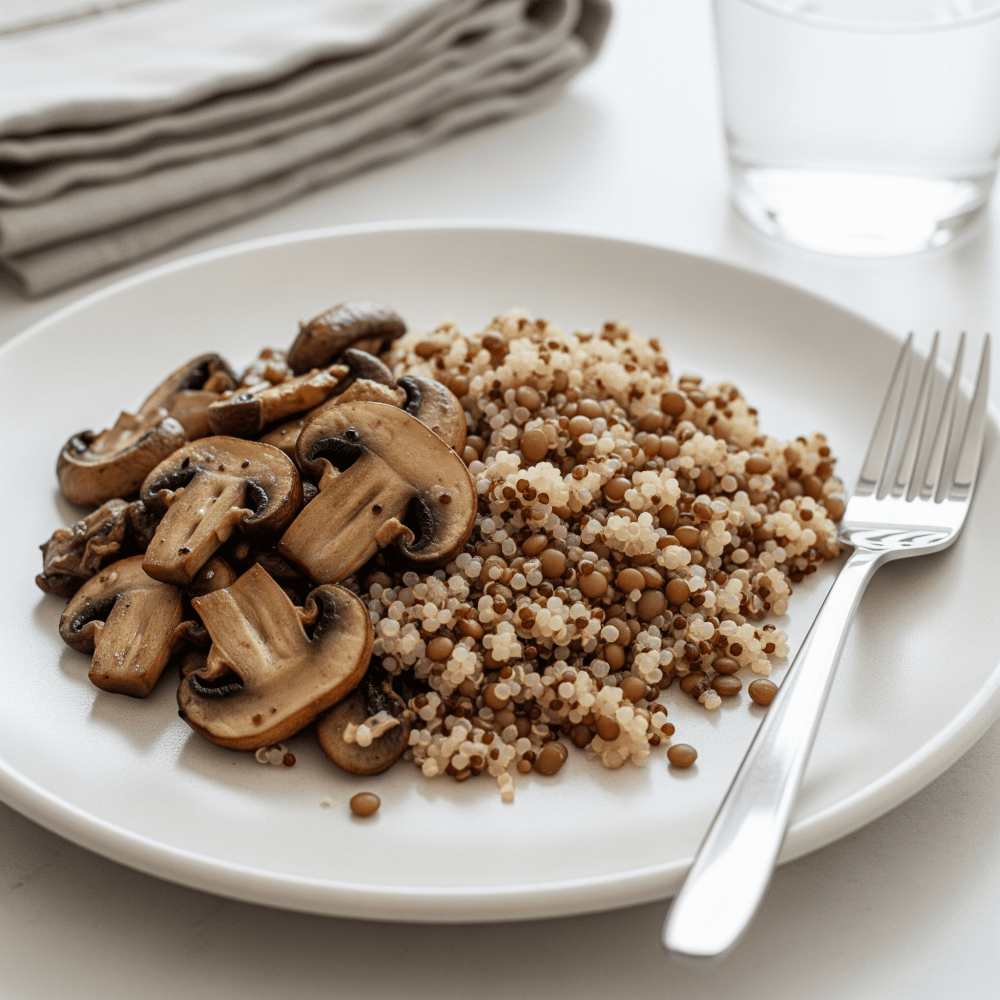
More than the macros, these pairings create culinary synergy — earthy meets nutty, chewy meets creamy and umami meets depth.
Functional and Fitness-Based Benefits of Mushroom Protein
First, mushrooms offer lean, low-fat protein without the saturated fat or inflammatory load often associated with animal sources. This makes them an ideal inclusion in diets geared toward cardiovascular health, lean mass maintenance, and metabolic resilience.
More than that, research from Applied Sciences (MDPI, 2022) confirms that certain edible mushrooms contain bioactive peptides with antioxidant, anti-inflammatory, and even anti-hypertensive properties.
These peptides support muscle recovery and also aid in reducing oxidative stress, which is a crucial factor in both exercise recovery and long-term health.
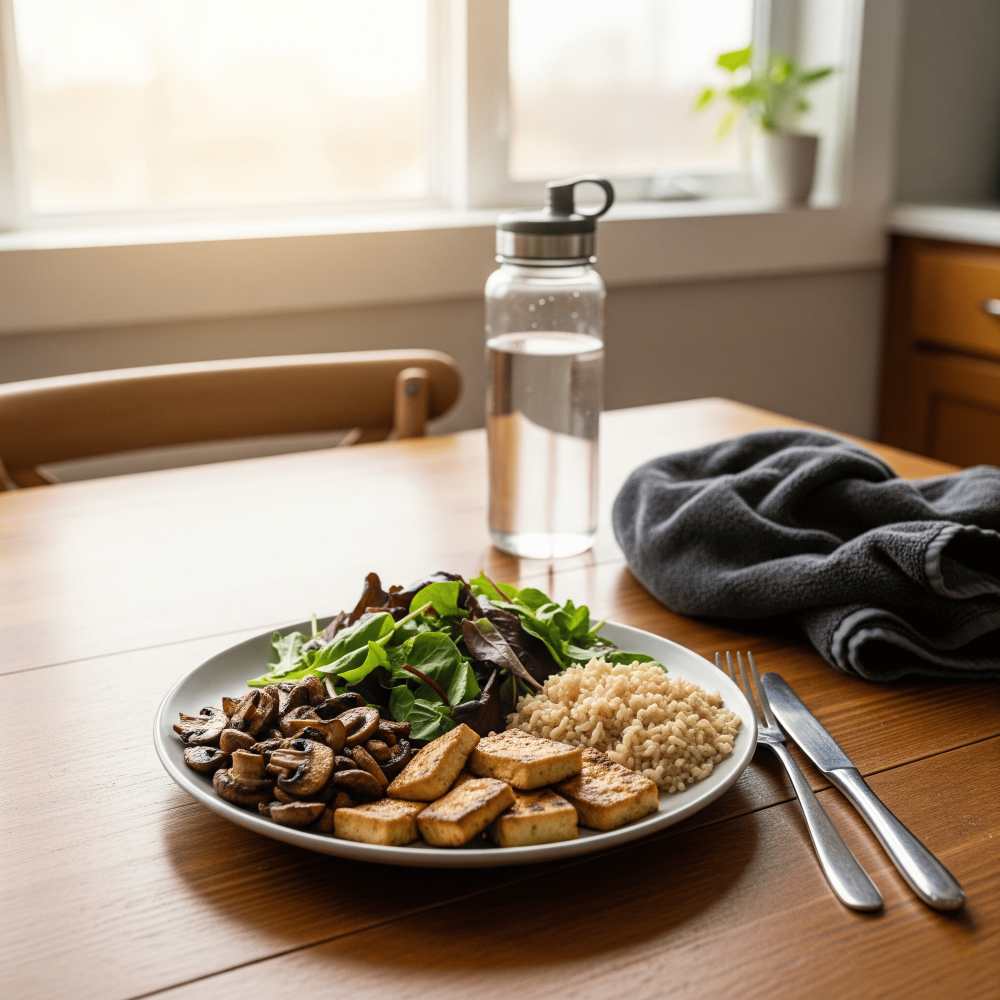
In fitness contexts, I see mushrooms as a “recovery enhancer” — especially when integrated into post-training meals with legumes, seeds, or protein-rich grains.
What to Watch Out For: Limitations and Common Misconceptions
Not every mushroom is a nutritional goldmine. And while I love mushrooms enough to dedicate a whole shelf in my fridge to them, I’d be misleading you if I didn’t point out a few key caveats.
First, the protein content in mushrooms is real — but modest. Even the best-performing varieties rarely break 4g per 100g raw. That means you’d have to eat a very large volume (or combine with other foods) to meet your daily protein needs solely with mushrooms.

Also, not all mushrooms are equal. Some, like wood ears or chanterelles, bring stunning flavor and texture, but offer lower protein density and minimal amino acid diversity. Others, especially overcooked white mushrooms, may lose phenolics and ergothioneine depending on the prep method.
Then there’s the issue of false assumptions around mycoprotein. As mentioned earlier, mycoprotein from Fusarium species is not the same as the protein in whole mushrooms. Don’t mistake eating sautéed portobellos for consuming Quorn — they’re both fungal in origin, but structurally and nutritionally different.
Here are some realistic reminders:
- Don’t rely solely on mushrooms for protein goals — treat them as strategic inclusions.
- Rotate varieties to diversify micronutrient and phytochemical exposure.
- Be cautious with wild mushrooms unless you are absolutely sure of their identity. Some toxic varieties mimic edible ones in appearance but can cause severe harm.
In sum: mushrooms are powerful allies, not saviors. Use them wisely, in combination with other whole foods, and they’ll do their part — not as a miracle food, but as a nutrient-dense, culinary-functional building block of plant-based living.
Resources:
Pashaei, K. H. A., Irankhah, K., Namkhah, Z., & Sobhani, S. R. (2024). Edible mushrooms as an alternative to animal proteins for having a more sustainable diet: a review. Journal of Health Population and Nutrition, 43(1). https://doi.org/10.1186/s41043-024-00701-5
Das, A. K., Nanda, P. K., Dandapat, P., Bandyopadhyay, S., Gullón, P., Sivaraman, G. K., McClements, D. J., Gullón, B., & Lorenzo, J. M. (2021). Edible mushrooms as functional ingredients for development of healthier and more sustainable muscle foods: A flexitarian approach. Molecules, 26(9), 2463. https://doi.org/10.3390/molecules26092463
Dimopoulou, M., Kolonas, A., Mourtakos, S., Androutsos, O., & Gortzi, O. (2022). Nutritional composition and biological properties of sixteen edible mushroom species. Applied Sciences, 12(16), 8074. https://doi.org/10.3390/app12168074
Roncero-Ramos, I., Mendiola-Lanao, M., Pérez-Clavijo, M., & Delgado-Andrade, C. (2016). Effect of different cooking methods on nutritional value and antioxidant activity of cultivated mushrooms. International Journal of Food Sciences and Nutrition, 68(3), 287–297. https://doi.org/10.1080/09637486.2016.1244662
Sousa, A. S., Araújo-Rodrigues, H., & Pintado, M. E. (2022). The health-promoting potential of edible mushroom proteins. Current Pharmaceutical Design, 29(11), 804–823. https://doi.org/10.2174/1381612829666221223103756
Sun, Y., Lv, F., Tian, J., Ye, X. Q., Chen, J., & Sun, P. (2019). Domestic cooking methods affect nutrient, phytochemicals, and flavor content in mushroom soup. Food Science & Nutrition, 7(6), 1969–1975. https://doi.org/10.1002/fsn3.996
Xiao, K., Zhang, J., Pan, L., & Tu, K. (2023). Investigation of 3D printing product of powder-based white mushroom incorporated with soybean protein isolate as dysphagia diet. Food Research International, 175, 113760. https://doi.org/10.1016/j.foodres.2023.113760





